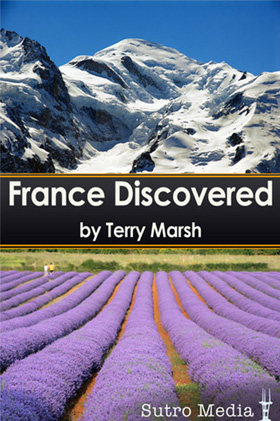COGNAC
The tipple of emperors
© Chateau du Beaulon
Cognac, named after the town of Cognac, is a variety of brandy, produced in the wine-growing region surrounding the town from which it takes its name, in the French départements of Charente and Charente-Maritime.
The extensive vineyards of Cognac sprawl across an area of around 200,000 acres. It is the combination of the proximity to the sea, a warming sun that is so perfect for the production of what has been called a ‘happy accident of nature’, and the quality of the soil, what the French call terroir, but which really defies translation, except to describe it as a blend of a whole range of tangible intangibles, like air, wind, rain, soil, location, and just about everything that might conceivably have an influence on the end product. It's a versatile word; drop 'terroir' into a conversation, and sound as though you know what they mean, and your status rises perceptibly.
|
|
|
I used to think that having to select from an extensive restaurant wine list was quite a hardship, until I visited Charente Maritime. That’s not because the wines here have pretensions to vie with the great wines of the nearby Bordeaux vignobles, but because this is cognac country. And among my many failings I have this weakness for cognac, the rarer, the finer, the better. So, imagine my torment when faced with cognac at the coal face, so to speak. Do I opt for Grande Champagne or Petite Champagne, and start with the best from the countryside around the eponymous town of Cognac? Or do I lower my sights and go for the Bois Ordinaires or the Bons Bois? In the end I feigned ignorance and had something with ‘XO’ on the label, knowing it to be up there alongside ‘Napoleon’, ‘Extra’ and ‘Hors d’Age’.
Cognac was not produced until the 16th century. Before then, vines had been planted around La Rochelle from the 13th century onwards, developing a lively trade in wine production along the Charente. In the 16th century, however, English and Dutch merchants hit on the idea of distilling the wine to produce something stronger that could travel without the risk of deterioration. Alas, a slump in the demand for this ‘improved’ wine meant that large quantities were unsold, until the day that someone happened to taste the wine and found to the delight of all that it had significantly improved with age. Brandy production had arrived. But I found it worrying to discover that during the process of distillation around 2-3% of the brandy evaporates – what the distillers call ‘the Angels’ Share’, but something that amounts to around 23 million bottles each year! There must be quite a party going on in Heaven!
© Chateau du Beaulon
As an Appellation d'origine contrôlée (AOC), in order to bear the name Cognac, the production methods for the distilled brandy must meet specified legal requirements. It must be made from certain grapes; of these, Ugni Blanc, known locally as Saint-Emilion, is the most widely used variety today. It must be distilled twice in copper pot stills and aged at least two years in French oak barrels.
Most cognacs are aged considerably longer than the minimum legal requirement, because cognac matures in the same way as whiskies and wine when aged in a barrel. The region authorised to produce cognac is divided into six zones, including five crus broadly covering the department of Charente-Maritime, a large part of the department of Charente and a few areas in Deux-Sèvres and the Dordogne. The six zones are: Grande Champagne, Petite Champagne, Borderies, Fins Bois, Bon Bois and finally Bois Ordinaire. A blend of Grande and Petite Champagne Cognacs, with at least half coming from Grande Champagne, is known as Fine Champagne.
The official quality grades of cognac are, according to the BNIC (Bureau National Interprofessionnel du Cognac):
- VS Very Special, or 'Three Stars', where the youngest brandy is stored at least two years in cask.
- VSOP Very Special Old Pale, where the youngest brandy is stored at least four years in a cask, but the average wood age is much older.
- XO Extra Old, where the youngest brandy is stored at least six, but average upwards of 20 years. On 1 April 2016, the minimum storage age of the youngest brandy used in an XO blend will be set to ten years.
In addition the following can be mentioned:
- 'Napoleon' is a grade equal to XO in terms of minimum age, but it is generally marketed in-between VSOP and XO in the product range offered by the producers.
- 'Extra' designates a minimum of 6 years of age, this grade is usually older than a Napoleon or an XO.
- 'Vieux' is another grade between the official grades of VSOP and XO.
- 'Vieille Réserve' is, like the Hors d´Âge, a grade beyond XO.
- 'Hors d'âge' ('Beyond age') is a designation which BNIC states is equal to XO, but in practice the term is used by producers to market a high quality product beyond the official age scale.
This website was built using Site Build It!








